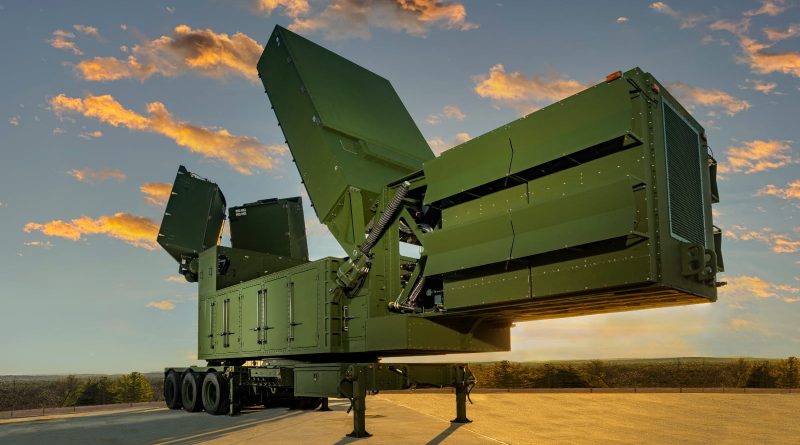LTAMDS radar shines in first tests
U.S. Army’s new radar proves its mettle against drones, cruise missiles and ballistic missiles;
After driving over rugged terrain and dodging free-range cattle and antelope, Holland arrives at a remote site in southern New Mexico to test the Lower Tier Air and Missile Defense Sensor, or LTAMDS, and prove its capabilities against a myriad of threats.
“We’ve quite literally been in the trenches for months – prepping, testing, and rehearsing for this moment, this mission,” said Holland, LTAMDS technical lead at Raytheon, an RTX business. “Now it’s time to watch this radar shine … show the world what it can do.”
Holland is part of an engineering team that successfully led contractor verification testing on the LTAMDS radar at the U.S. Army White Sands Missile Range. The series of successful tests marked a critical milestone in the development of LTAMDS, a next-generation, 360-degree radar built to defeat threats, including unmanned aircraft, cruise missiles, and tactical ballistic missiles – even hypersonic weapons, which fly faster than a mile a second. The Army plans to use it as a replacement for its Patriot air defense systems, while international customers look to add the new radar to their existing Patriot architecture.
“For 40-plus years, Patriot has had the watch, and there’s no denying its effectiveness. It’s a stalwart of air defense – reliable, effective, and combat-proven,” said Bill Patterson, LTAMDS program director at Raytheon. “If it’s possible to take that air defense radar to the next level, it’s LTAMDS.”
Raytheon has built six LTAMDS radars since the contract award in 2019. They are advancing through developmental testing, which will continue in 2024.
“It will search, it will acquire, it will track, it will discriminate, and it will guide a missile to an intercept. And we will demonstrate all that capability in U.S. government developmental tests,” Patterson said.
Environmental and mobility qualification and expanded system-of-system testing will follow developmental testing in 2024, with full operational capability expected by year-end.
Seeing the big picture
LTAMDS has three antenna arrays – the primary in front and two secondaries in the back. Working together, they can simultaneously detect and engage multiple threats from any direction.
Raytheon uses an active electronically scanned array, or AESA, technology, and military-grade gallium nitride, or GaN, made at its foundry in Andover, Massachusetts, to strengthen LTAMDS’ radar signal and enhance its sensitivity for longer range, higher resolution, and more capacity.
“LTAMDS is a transformational capability. It’s ready for today’s fights, but it has the range, power, and software flexibility to deal with evolving threats and support the future fight,” said Bob Kelley, a senior director for Requirements and Capabilities at Raytheon.
Going global
Kelley said that The radar, specifically its ability to track threats in 360 degrees, is of keen interest to U.S. friends and allies. “The ability to detect and defend against complex, highly coordinated multi-threat attack scenarios is critical in layered defense.”
In 2023, the Polish Minister of Defense approved a Letter of Acceptance with the U.S. Army to enhance its air and missile defense capabilities with 12 LTAMDS radars. When the foreign military sale is finalized, Poland, a NATO ally, will be the first international partner to purchase the radar, complementing their existing Patriot system.
Patriot is the backbone of air defense for 19 countries, many of which have expressed interest in LTAMDS because “they see it as an important evolution in their air and missile defense capability,” Kelley said.
“We’ve identified a set of design changes for Patriot that would allow it to accept LTAMDS and integrate it as part of a Patriot configuration,” Kelley said.

